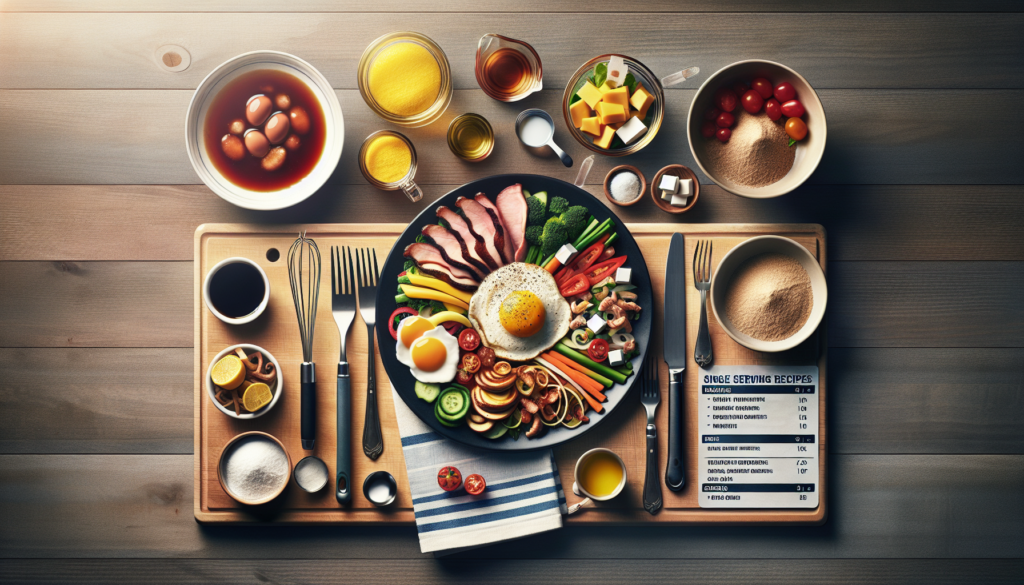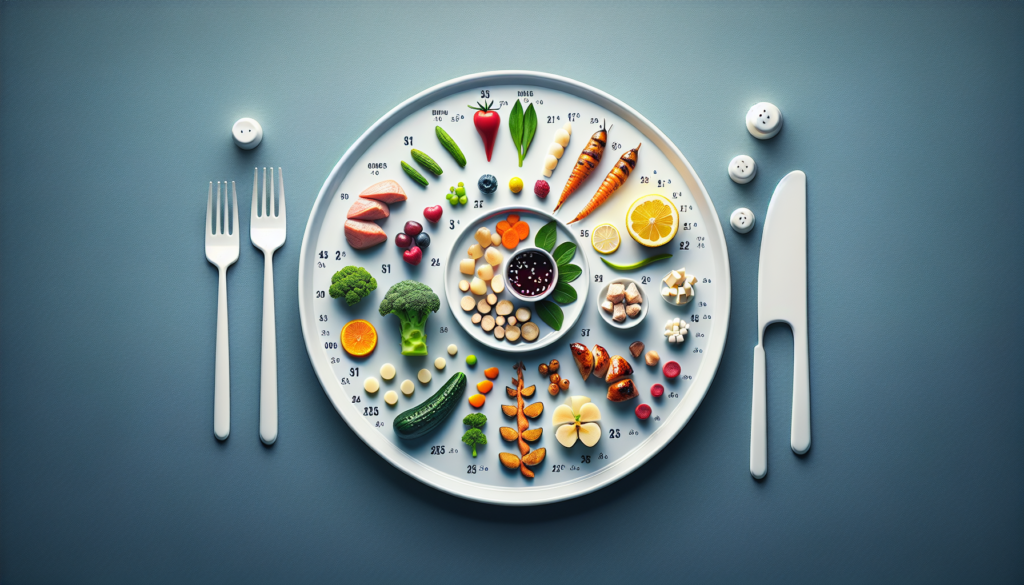Are you tired of trying to navigate your way through recipes that are meant to serve a crowd, when all you need is a meal for one? Don’t worry, we’ve got you covered. In this article, we’ll explore the art of adapting multi-serving recipes to perfectly meet the needs of a single person. From adjusting ingredient quantities to modifying cooking times, we’ll provide you with all the tips and tricks you need to create delicious, solo-sized dishes. Say goodbye to leftovers and hello to personalized meals made just for you!
Choosing Recipes to Adapt
When choosing recipes to adapt for yourself, there are a few factors to consider. First, think about the serving size. Many recipes are designed to serve multiple people, so you’ll need to scale down the quantities to make a single serving. Secondly, focus on recipes that use non-perishable ingredients. This allows you to keep your pantry stocked with essentials and avoid frequent trips to the grocery store. Lastly, look for recipes that have easy-to-scale quantities. Some recipes may have complicated measurements or ratios, which can be more challenging to adapt. By choosing recipes with simple measurements, you’ll have an easier time adjusting the ingredients to suit your needs.
Dividing Ingredients
Dividing ingredients is an essential step when adapting recipes for one person. One simple way to do this is by using fractions or percentages. For example, if a recipe calls for 1 cup of flour and you only need a quarter of that amount, you can use 1/4 cup or 25% of the original measurement. This method ensures that you maintain the correct proportions of each ingredient. Another helpful tool for precision is a kitchen scale. By weighing ingredients, you can be more accurate in dividing them and achieve consistent results every time.

Reducing Cooking Time
When cooking smaller portions, it’s important to adjust the cooking time accordingly. Smaller portions generally require less time to cook compared to larger servings. Keep an eye on the dish as it cooks and monitor the progress closely to prevent overcooking. Follow the original recipe’s cooking instructions as a guide but be prepared to make adjustments based on your observations. By reducing the cooking time, you’ll ensure that your meal is not overdone and remains perfectly cooked.
Freezing Extra Portions
If you find yourself with extra portions after scaling down a recipe, freezing them is a great way to extend their shelf life and have ready-to-eat meals in the future. After preparing the recipe as usual, divide the cooked dish into individual portions. This can be done using freezer-safe containers or bags. Label each portion with the recipe name and the date it was prepared. This way, you can easily identify and keep track of your frozen meals. Freezing extra portions also comes in handy for busy days when you don’t have time to cook from scratch.

Halving or Doubling Recipes
Sometimes, you may want to adapt a recipe to make more or less than the original. Halving or doubling the quantities is a straightforward process. Divide or multiply all ingredient quantities by half or double, respectively. For example, if the original recipe calls for 2 cups of flour and you want to make half the amount, use 1 cup. It’s important to note that you should also adjust the cooking time and temperature accordingly. Smaller portions will generally require less time to cook, while larger portions may need more time. Additionally, consider using smaller or larger cookware to accommodate the adjusted recipe quantities.
Making Use of Leftovers
Leftovers can be a great starting point for planning your meals. When adapting recipes, think about how you can incorporate leftovers from previous dishes. For example, if you made roasted chicken one night, you can use the leftover meat to make a chicken salad or add it to a pasta dish the next day. By getting creative with ingredient combinations, you can avoid food waste and make the most out of your leftovers. This not only saves you time and effort but also adds variety to your meals.
Adjusting Seasonings and Spices
Everyone has different preferences when it comes to seasonings and spices. When adapting recipes, don’t be afraid to adjust the amount of seasonings to your liking. If you prefer a milder flavor, reduce the amount of seasoning accordingly. On the other hand, if you enjoy bold flavors, feel free to increase the seasoning quantities. Additionally, consider the serving size when adjusting seasonings. A recipe designed for multiple servings may require more seasoning overall, so be mindful of this when scaling it down.
Using Pan Dividers or Ramekins
Pan dividers or ramekins can be incredibly useful when adapting recipes for one person. They allow you to separate ingredients within the same dish, making individual portions easier to serve and handle. For example, if you’re making a casserole, you can use pan dividers to create separate compartments for each portion. This way, you can easily portion out your meal without having to transfer it to another container. Ramekins are particularly handy when making single-serving desserts or side dishes. They provide a perfect individual portion size and add an elegant touch to your presentation.
Cutting Down on Cooking Equipment
When cooking for one, it’s often more efficient to use fewer pots, pans, and utensils. Look for recipes that require minimal cooking equipment to streamline your cooking process and minimize cleanup. One-pot meals, where all the ingredients are cooked in a single pan, are an excellent choice. Not only do they save you time and effort in cleaning, but they also allow flavors to blend together harmoniously. Similarly, sheet pan meals, where everything is cooked on a baking sheet, are another great option. They simplify the cooking process and reduce the need for multiple pots and pans.
Modifying Baking Recipes
Adapting baking recipes for one person requires a few adjustments to ensure the perfect result. Firstly, you’ll need to adjust the baking time and temperature. Smaller batches generally require less time in the oven, so keep a close eye on your baked goods and be prepared to remove them earlier than the original recipe suggests. Conversely, larger batches may need a bit more time to bake through. Secondly, consider using individual-sized baking pans or molds. This way, you can portion out your baked goods perfectly and avoid waste. Individual-sized treats are also great for portion control and make for cute and personalized desserts.
Adapting multi-serving recipes for one person doesn’t have to be a daunting task. By considering the serving size, focusing on non-perishable ingredients, and looking for easy-to-scale recipes, you’re off to a great start. Dividing ingredients using fractions or percentages, adjusting cooking time based on portion size, and utilizing freezer storage for extra portions are all valuable techniques. Halving or doubling recipes, making use of leftovers, and adjusting seasonings to your taste help add variety to your meals. Pan dividers or ramekins, as well as cutting down on cooking equipment, make cooking and serving more manageable. Lastly, modifying baking recipes with adjusted time, temperature, and individual-sized pans ensures delightful treats every time. With these tips in mind, you can confidently adapt recipes for one person and enjoy delicious meals tailored to your needs.
